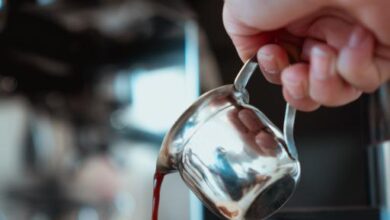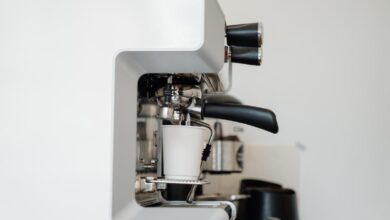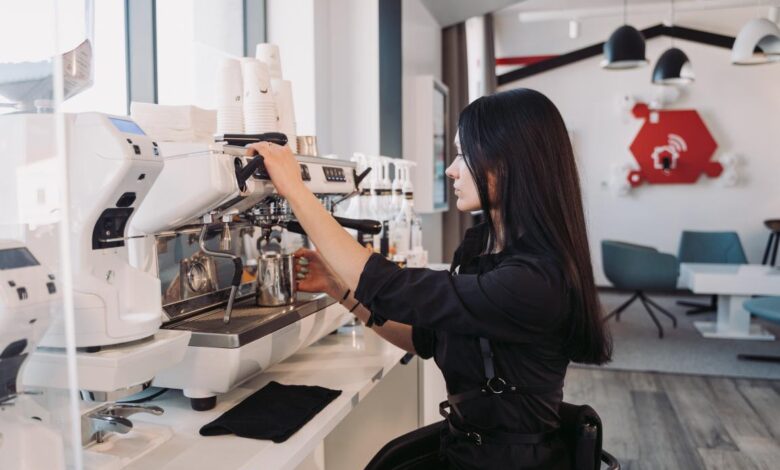
The Mystery of Decaffeinated Coffee
Caffeine has become America’s most popular drug by far.
90% of Americans consume caffeine in one form or another every single day. Most of it comes from drinking coffee.
But if you’re a coffee lover who prefers to avoid caffeine, you can still enjoy a cup of coffee that delivers rich flavor with decaffeinated coffee.
It’s how the caffeine is extracted from coffee beans that is a mystery for most of us.
These are some of the methods currently used for decaffeinating.
Direct Contact Method
In the direct contact method the beans come directly in contact with decaffeinating agents, such as methylene chloride, after being softened by water or steam. Caffeine is removed by directly soaking the materials in the methylene chloride.
Indirect Contact Method
With the indirect contact method a water and coffee solution is used to draw off the caffeine. The solution containing the caffeine is then treated with a decaffeinating agent, such as ethyl acetate, and mixed back into the beans for reabsorption of the flavorings.
Sometimes this method is referred to as naturally decaffeinated because ethyl acetate is a chemical found naturally in many fruits.
Water Processing
This process is similar to the indirect method, except no chemicals are used. The coffee beans are soaked in hot water then the solution is passed through a carbon filter to remove the caffeine.
Swiss Water Process
In the Swiss Water Process method, the caffeine is still extracted with carbon filters but the beans soak in hot water that is saturated with coffee flavor.
The result is caffeine removal without removing the coffee flavors.
It’s referred to as Swiss Water Process because a Swiss company originally developed and patented the procedure.
Carbon Dioxide Processing
With this method the beans are soaked with water-softened materials in highly compressed carbon dioxide. The small caffeine molecules are extracted from the beans allowing the larger flavor molecules to remain untouched.
This method retains the best overall flavor of all of the methods used.
Not all of the caffeine is completely removed with any of these current methods.
To qualify as decaffeinated coffee in the United States, coffee must have at least 97 percent of its caffeine removed.
Coffee beans are decaffeinated before they are roasted because that’s when it has the least effect on the beans flavor.
The reason decaffeinated coffee costs more is because of the additional labor, equipment and material needed to remove the caffeine.
So what do they do with all of that caffeine? The extracted caffeine is manufactured and used mostly in medicines and soft drinks.
As an example, the caffeine content in soft drinks mainly comes from the caffeine extracted from these decaffeination processes.
The kola nut accounts for less than 5 percent of the caffeine in cola drinks.
For the past 30 years scientists have done extensive research on coffee and the effects of caffeine. New research has even shown that caffeine has many positive effects.
Some of these effects include more energy, the ability to concentrate better and has even been used as an appetite suppressant.
But not all scientists agree with these findings and coffee and the effects of caffeine will continue to be thoroughly researched.
There will always be a market for decaffeinated coffee because some people just love their coffee without the caffeine buzz.
The rest of the 100 million regular coffee drinkers either love their coffee for the wonderful flavor or enjoy the effects of a caffeine boost. For most of us, I’m sure it’s a little of both.
How Coffee is Decaffeinated
First, let’s start with a really quick history. Coffee was first decaffeinated by Ludwig Roselius, a German coffee merchant, in 1905 after he received a coffee shipment that had gotten soaked during a storm at sea.
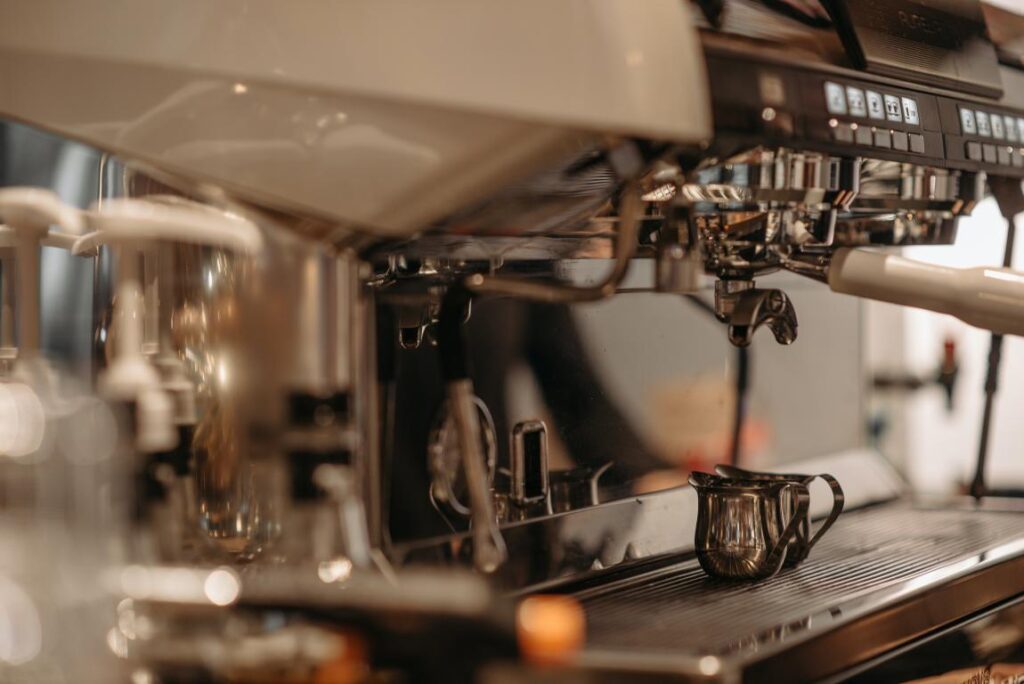
He experimented with the brine-soaked coffee, and found out that benzene could be used as solvent to bond with the caffeine.
Since caffeine is water-soluble at temperatures above 175°, he could boil the solution to separate the caffeine from the coffee. With his process, the coffee was decaffeinated, but it had lost much of its flavor.
For the record, Ludwig improved on his process and went on to sell his discovery under the Sanka brand name. Benzene is no longer used, as it is not considered safe for human consumption.
Today there are 3 commonly used methods available for removing caffeine from coffee, with dozens of variations of those methods. Two common variations are Direct and Indirect Method.
European or Traditional Process – Direct Method:
The direct process involves softening the beans by steam first, then washing them for about 10 hours with either a methylene chloride or ethyl acetate solution to absorb the caffeine from the bean.
The solution is discarded, the beans are re-steamed to remove any remaining solvent (methylene chloride boils away at 114°; ethyl acetate at 104°), then the beans are dried to their original moisture content.
European or Traditional Process – Indirect Method:
Instead of being steamed, the coffee beans are soaked in very hot water, which extracts the caffeine along with many of the oils.
This solution is then treated with either methylene chloride or ethyl acetate, which bonds with the caffeine. Then the solution is heated to the temperature at which the caffeine and either methylene chloride or ethyl acetate compounds evaporate. The oils are then reintroduced to the beans, and the beans are then dried.
About 80% of decaf coffees are processed by the Traditional, or European Process, and many serious coffee drinkers believe this method makes for the best-tasting coffee.
Others worry about the chemicals involved. Methylene chloride is considered a superior solvent since it can evaporate at a lower temperature and leaves virtually no trace in the beans, but it is an environmental hazard to workers at decaffeination plants, and it is known to harm the ozone layer.
Ethyl acetate can be extracted from various fruits and vegetables and so it is considered a “naturally-found” chemical, but most ethyl acetate used for decaffeinating is synthethically produced.
The Water or Swiss Water Process:
Also known as the water process, this process uses no chemicals, but rather hot water, steam and osmosis to remove the caffeine from the coffee in two steps.
In the first step, which is similar to the Traditional, Indirect Method, the beans are soaked in a hot water solution to remove the caffeine and the flavor oils.
The beans used in this step are then discarded. The solution is run through activated charcoal filters to remove the caffeine, but leave the flavor oils. A new batch of beans is then soaked in the solution.
According to the laws of osmosis, the caffeine leaves the beans to go to the uncaffeinated solution, but the flavor in both the solution and the beans is equal, so no flavor leaves the beans.
The beans are then dried and shipped to the roasters. The disadvantage is that the water processing removes more than just the caffeine. Some of the oils from the coffee bean are removed as well, making it less flavorful.
The Hypercritical Carbon Dioxide Method:
In this method, which is not as popular as the other methods, the beans are soaked in a solution of liquid carbon dioxide to remove the caffeine.
The get to a liquid state, the carbon dioxide must be highly pressurized (73 to 300 atmospheres), which makes the logistic cost of this method a bit higher than the other methods.
After the caffeine is absorbed by the carbon dioxide, either the pressure is reduced and carbon dioxide is allowed to evaporate, or the solution is run through a carbon filter to remove the caffeine.
Although more expensive, the advantage of the Carbon Dioxide Method is that since carbon dioxide is not a harmful gas, the method is not harmful to health or the environment.
Other Methods:
Since there’s no consensus best-way to remove caffeine from coffee beans, there are still new methods being developed.
One new method is the Triglyceride Process. In this method, green coffee beans are soaked in a solution or hot water and coffee to draw the caffeine to the surface of the beans.
Then, the beans are transferred to another container and immersed in coffee flavor oils that were obtained from spent coffee grounds.
The flavor oils contain triglycerides are a naturally-occurring combination of fatty acids and glycerol, and , after several hours at high temperatures, they are able to remove the caffeine from the beans while not affecting the flavor.
Another new method, and possibly the future of decaffeinated coffee, is the cultivation of Naturally Caffeine-Free Coffee from trees that have recently discovered in that produce coffee with no caffeine.
Depending on the variety of coffee, the caffeine content already varies significantly, from about 75 mg to 250 mg per 6 oz. cup.
Arabica coffee varieties normally contain about half the caffeine of robusta varieties, and dark roast coffee usually has less caffeine than lighter roasts since the roasting process reduces caffeine content of the bean.
An arabica bean containing a tenth as much caffeine as a normal bean has been found, so the possibility of developing or finding a bean with no caffeine is probably a matter of time
Why Decaffeinated Coffee Was Introduced
Being an avid drinker of coffee, I never could figure out the reason following decaffeinated coffee. People usually drink coffee or espresso for the caffeine fix,

so I always wondered as to why anyone would drink decaffeinated coffee. Would it not just defeat the purpose of drinking coffee? However, I finally saw the light and managed to figure out why decaffeinated coffee existed.
This helped me immensely to sustain some sort of extravagance during my pregnancy and I also found out that I was not drinking coffee just for the caffeine fix and that I quite rather liked the taste of different coffee types.
During my pregnancy I was one of those nutcases who had read up everything that could go wrong during a pregnancy and tried to avoid those possible causes like anything.
For instance, I avoided aspartame only because they were unsure of the effects it might have on the baby and I stayed away from lunchmeat because it had a minute possibility of a listeria infection.
Hence, when I got to know that caffeine had the possibility to cause miscarriages, I tried to avoid regular coffee.
Now, to reach the parameters that were measured in the studies for miscarriages to happen, a person would have to drink at least three cups of coffee daily.
However, after reading that I was scared enough to confine myself to drinking decaffeinated sodas and coffees.
When I was halfway through my pregnancy, there was an expose show on the T.V on whether the decaffeinated coffee that we order in restaurants and coffee shops are really decaffeinated or not.
I knew that decaffeinated coffee was not totally void of the substance and had small traces of caffeine in it. I also knew that I was not taking in amounts that were close to regular coffee.
However, in the T.V show they revealed that the caffeine levels in decaffeinated coffee was close to the levels of the caffeine in a regular brew. They also reveled that this was the situation in around sixty percent of the places.
This happened mainly because the machines and pots were not properly cleaned before the next pot was used or because of cross brewing. This particular case would not affect most situations, but in cases where there are medical conditions this would have taken a serious turn.
It is a fact that this would truly affect my situation in any way and I also realize it. But, I am such a nutcase that I have completely cut out coffee (whether regular or decaffeinated) from my diet during my pregnancy.
Unless I had brewed the coffee at home, I had totally removed caffeine free coffee during the fall and winter months. I should also say that during the last few months of my pregnancy this change had not helped my demeanor in any way.
Espresso’s Good, But Why Decaffeinated Coffee?
I love above all else to drink coffee, but I am still totally baffled why anyone would drink decaffeinated varieties. What about the needed and pleasurable caffeine rush?
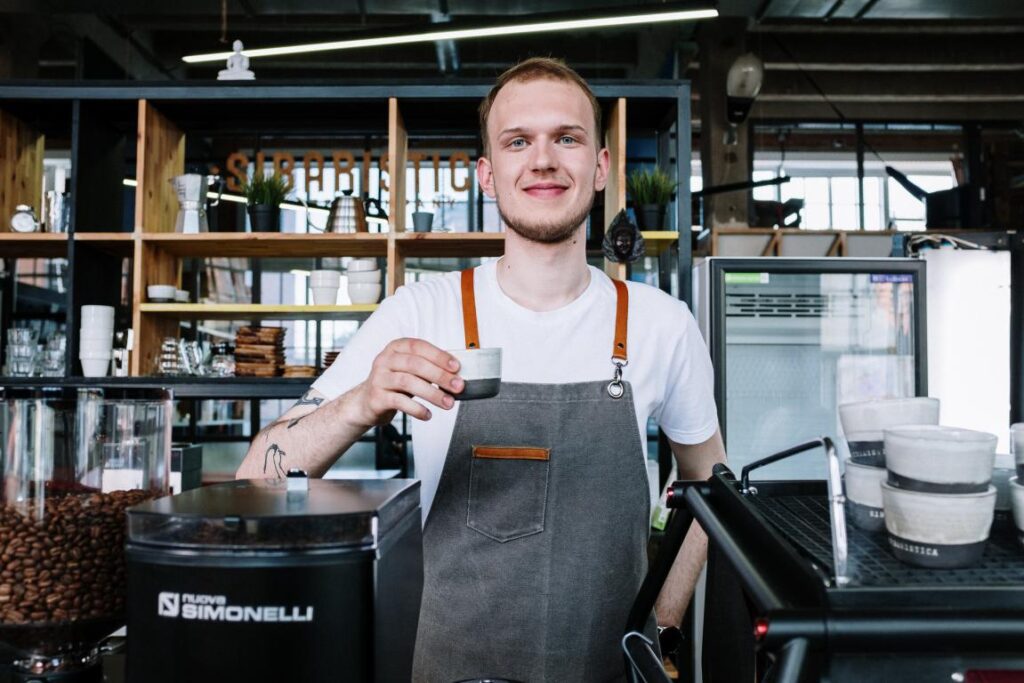
What would possess anyone in his or her right state of mind to give up on a good espresso for that dribble? Does this not take away the whole reason for drinking a decent cup of delicious coffee?
I was soon to learn why this drudgery even existed. As I discovered pregnancy, I quickly developed a new taste for it. In fact, strangely enough,
I actually really started to like it for the flavor alone. Weird, right? Hormonal reaction, maybe? That may have been a possibility, but you should read the rest.
Unfortunately, for everyone else, I cannot resist the insatiable urge to learn absolutely everything there is to know about pregnancy and how to avoid all known complications, diseases and anything,
even the bubonic plague. Science said to avoid aspartame because how much of it was harmful was unknown. Luncheon meat was out because of a possible infection from listeria.
Caffeine was the biggest fear – possible miscarriage. The fact is that you have to consume a minimum of three portions of normal coffee each day to do this, but it frightened me enough to settling for decaffeinated drinks and simple sodas.
Then, reaching my half-term point, I was horrified to discover through some television coverage that some decaffeinated varieties from coffeehouses may not be as caffeine free as they had claimed.
Of course, it is obvious that there was some fractional amount of caffeine left in my drinks. However, I never dreamt that I was consuming close to that in the regular drinks.
Then I discovered something else. In almost 60% of cases, the caffeine concentration in decaf was no different from the regular.
As if that wasnt enough, scientists discovered that the problem lay in a cross-brewing process or the very brewing machines that had not been cleaned properly after the last batch. Normally that would not be a problem. However, in my case that was out of the question.
I understand now that during pregnancy my instincts to protect my unborn child left me now mad enough to eliminate any coffee types from my diet altogether, unless I made it myself.
My pregnancy was to go undisturbed with any hint of decaf and that it frankly didnt help my moods during my last trimester.
co2 decaffeination process tea,co2 decaf vs swiss water,coffee is good for health,decaf coffee,the swiss water process,
ethyl acetate,coffee,caffeine,caffeine free,decaf,decaffeinated,coffee plants,decaffeination process,caffeine removal,caffeine extract,coffee beans,



